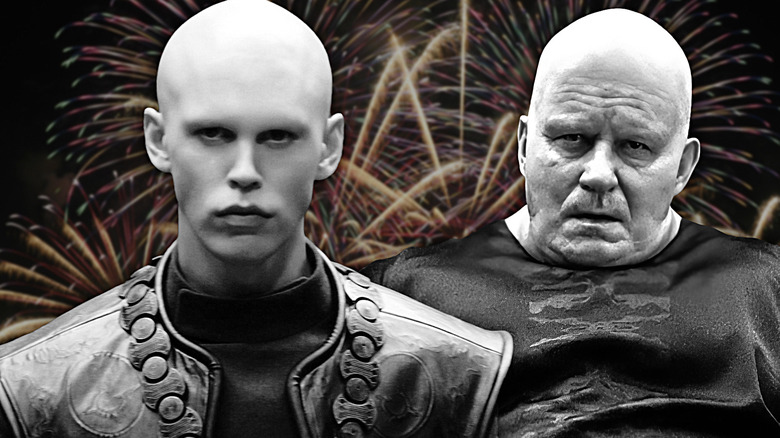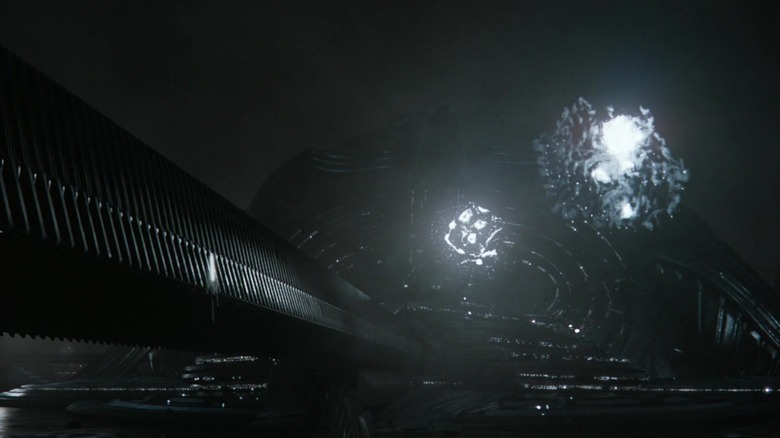Of all the memorable sequences in “Dune: Part Two,” the one that sticks out perhaps most clearly six months later is that entire detour on the Harkonnen planet, Giedi Prime. With the Roman-esque coliseum and all the brutal, sadistic culture on display, it’s a fascinating bit of worldbuilding and an exciting introduction to Feyd-Rautha (Austin Butler), the movie’s resident bad boy. It’s a sequence that seemingly defies all rules of conventional screenplay structure, what with it being placed more than halfway through the film. Still, it’s so bold and fresh that it’s hard to complain.
Most noteworthy is the sequence’s color palette. Whereas director Denis Villeneuve depicts the desert sequences in these movies with fairly muted colors, especially compared to other desert-set blockbusters like “Mad Max: Fury Road,” the Harkonnen sequence takes things further by presenting us a world that’s almost entirely in black and white. Harkonnen society is so cold and lifeless that even the fireworks lack any sense of vibrancy. Instead of fun multi-colored explosions, they look like weird clusters of ink blots.
This was the intention, it turns out. As producer Tanya Lapointe explained in the behind-the-scenes book “The Art and Soul of the Dune: Part Two,” those fireworks — if you can even call them fireworks — were inspired by “drops of ink falling into clear alcohol.” Lapointe described this as one of the most “challenging elements” to pull off in the movie, as Villeneuve had wanted them to look like “negative fireworks,” which don’t exist in our world.
The Harkonnens: a society of idiot vampires
It’s hard to argue with the results: these truly are the most depressing fireworks anyone could imagine. They’re creepy and alien-looking, serving as yet another reminder (one of hundreds in this scene) that these Harkonnens are not the good guys in this story. As flawed as Paul Atreides is, we can at least take solace in how he’s at least more human and sympathetic than these creeps. The Harkonnens have evolved (or devolved) so far beyond what we recognize as humanity that even their fireworks are ugly and off-putting; Paul’s Holy War across the universe might be unforgivable, but his destruction of House Harkonnen certainly isn’t.
Another telling bit from the behind-the-scenes book is the description of what Denis Villeneuve wanted the people in the stadium to look like. “A homogeneous group of men and women with similar body types, all wearing the same style of clothing,” he reportedly told his costume designer, “A crowd of Nosferatu.”
Sure enough, Harkonnen society seems lacking in almost any sense of individuality. This is a trend throughout the entire “Dune” universe, in which pretty much every character has long learned to stifle their emotions for the sake of the political faction they belong to, but the Harkonnens take it to a whole other level. They’re depicted as depraved clones — people whom the audience would never be expected to feel bad for. Much has been written about the way the “Star Wars” films sidestep the humanity of the stormtroopers by covering up their faces, allowing the heroes to mow them down without any reservations, but “Dune: Part Two” found another way to dehumanize the bad guys. You don’t need to hide their faces; just make them look like a bunch of mindless vampires.




